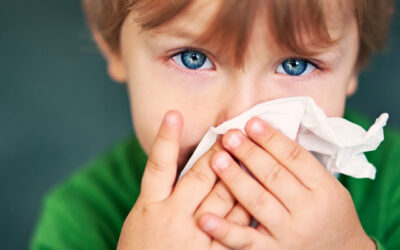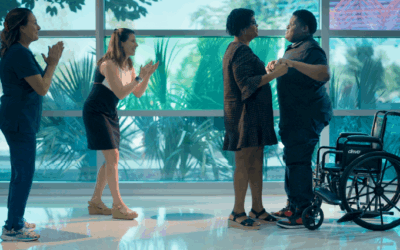From skinned knees on the driveway to mosquito bites at sunset, summer brings a special kind of childhood magic — and messiness.
In this episode of ParentingU, Dr. Kali Broussard, pediatrician and infectious diseases specialist with Our Lady of Lourdes Children’s Health, shares practical advice on how to handle minor summer injuries and build a first aid kit that works for real families.
What to Put in Your First Aid Kit
Keep these essentials on hand for summer mishaps:
- Insect repellent with DEET
- Hydrocortisone or anti-itch cream
- Diphenhydramine (Benadryl) for itching
- Saline squeeze bottle to clean wounds
- Gauze and bandages (preferably with characters)
Antihistamines like Benadryl (diphenhydramine) are great for itching, but Dr. Broussard also recommends having non-drowsy options like Zyrtec or Claritin on hand for summer allergies.
Dr. Broussard suggests one more thing to keep on hand during the summer: popsicles!
“Band-Aids and a popsicle fix almost everything,” Dr. Broussard says. “It’s crazy how a Band-Aid and a kiss can fix a kid who just fell off a bike.”
Don’t Fear the Bug Spray
With mosquitos, ticks and other summer pests, the best offense is a good defense. Dr. Broussard says DEET-containing repellents are safe when used correctly.
“You should only wear it as long as you need to,” she explains. “Spray it on before you go outside, and when you come back in, you wash it off.” That simple habit reduces exposure and keeps kids safe from bites that could transmit diseases.
Dr. Broussard’s take?
“You should be more fearful of the diseases and infections you can get from these insects than you should be of the very minuscule risk of these chemicals that have been studied.”
Skip the Old Wives’ Tales
Heard of using tobacco or spit for bee stings? Dr. Broussard advises against it.
“There’s a lot of bacteria in your mouth, so that’s probably just not a good practice,” she says. Instead, stick to basics you can find almost anywhere.
“You can get some hydrocortisone ointment. You can get some anti-itch ointment,” Dr. Broussard says. “Clean the sting well first and then apply the relief cream.”
What Really Prevents Infection
When a child falls off their bike and scrapes a knee, your first move matters most.
“The best thing you can do — as soon as you can do it — is clean the area with soap and water,” Dr. Broussard says. “That makes the biggest difference.”
Antibiotic ointments are fine to use, but don’t overestimate them. “They don’t necessarily prevent infection,” she notes. “They may just help keep the wound covered and soft.”
The Tetanus Myth (and Reality)
Tetanus doesn’t just come from rusty nails.
“That’s a myth,” Dr. Broussard says. “The risk is higher from dirty wounds, but tetanus bacteria is everywhere. It lives in the environment.”
The best protection? The vaccine.
“Being up to date with your tetanus vaccines is pretty important for those small injuries that are going to happen in the summer.”
To Cover or Not to Cover?
If a wound is bleeding or oozing, cover it.
“The covering doesn’t need to be airtight,” she says. “You just want to keep out dirt, especially if your kid is going right back to play.”
After bath time, she recommends letting it air dry briefly before applying a fresh bandage — again, preferably with a favorite character.
Don’t Panic
“They’re gonna happen,” Dr. Broussard says of summer scrapes and stings. “The best thing you can do is keep them clean. Wash with soap and water. Then a Band-Aid and a popsicle fix almost everything.”




